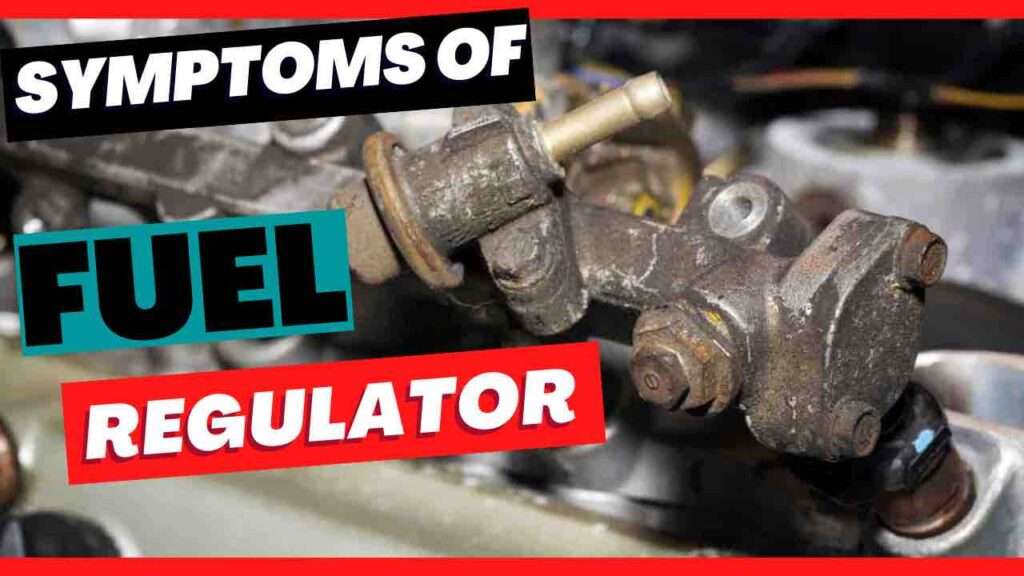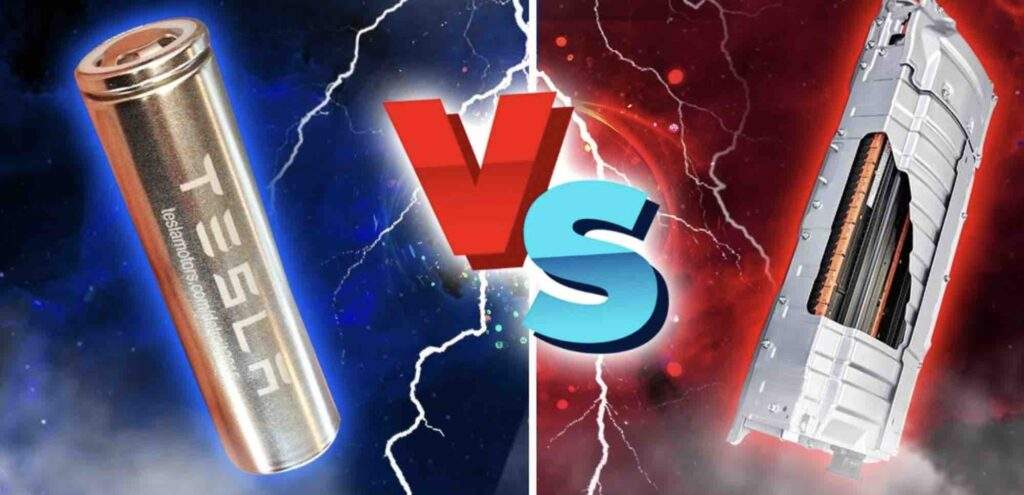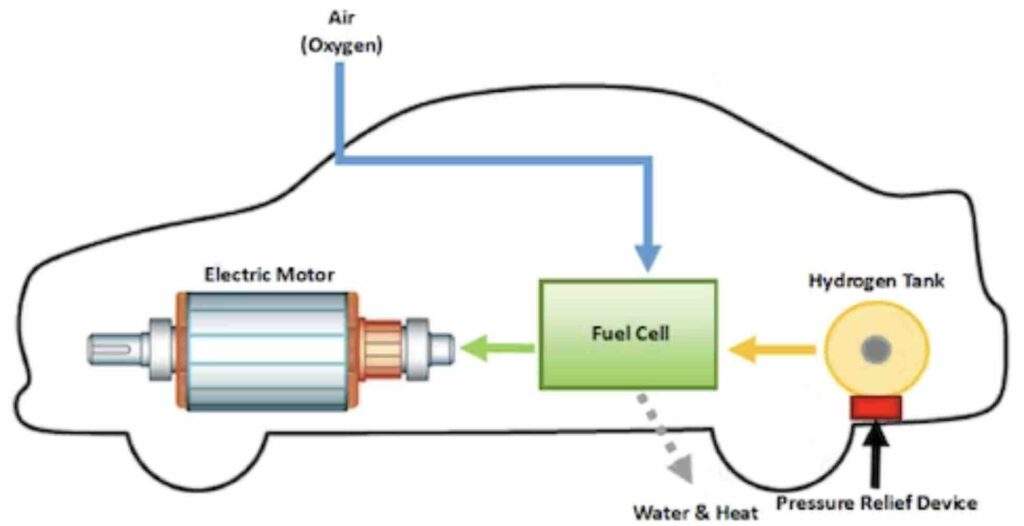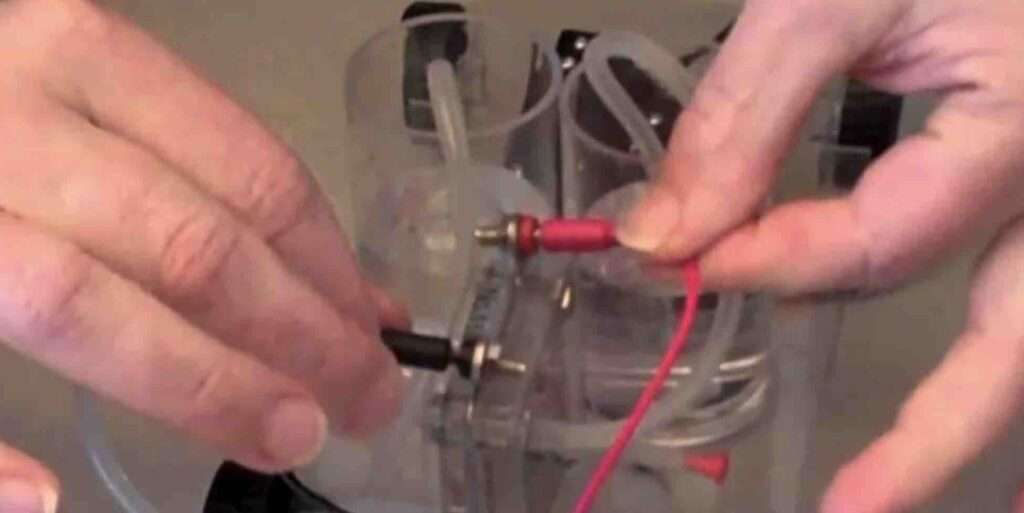Last updated on July 1st, 2023 at 06:42 am
In this post, we will discuss symptoms of bad fuel pressure regulators, the cleaning tips, and the cause of faulty, damaged, or bad fuel pressure regulator symptoms. It is an indispensable fact that fuel is the lifeblood of most engines. Your vehicle wouldn’t run without it. The entire fuel system and components facilitate fuel delivery to your vehicle’s engine for proper operation.
As part of the fuel system, the fuel pump doesn’t regulate the quantity of petrol delivered but only exports gas from the tank to the engine. As such, the vehicle manufacturers integrated the fuel pressure regulators to ensure that the engine supplies the proper fuel when necessary.
The fuel regulator should last as long as your vehicle’s life. In any case, if you have an issue starting your car or if it isn’t getting enough power as required, then there is a possibility that your fuel pressure regulator is terrible. Although, a bad fuel pressure regulator would cause rough idle, misfiring engine, engine stalling, check engine light (CEL) coming on, and a few others.
So, luckily for you, the fuel pressure regulator is not an advanced component to replace; you could do it yourself. This article will explore these specific issues ranging from; the causes of a bad fuel pressure regulator, 8 fuel pressure regulator symptoms, how to clean a fuel pressure regulator, and how to unstick a fuel pressure regulator.
Notwithstanding, an in-depth study of this write-up would be beneficial. Let’s get started!

Causes Of A Bad Fuel Pressure Regulator
The following are factors that constitute a fuel pressure regulator failing.
Here you have them;
- Contaminated Fuel Filter – If your fuel filter is with debris, it will restrict the proper flow of gas to the engine, and as a result, the pressure regulator will fail.
- Wiring Issues – Poor wiring or a short circuit would make the fuel pressure regulator malfunction. So, it would be proper if you were careful to check your wirings and contact a certified technician to ascertain safety.
- Defective Fuel Pump – Always ensure your fuel pump is functioning correctly for the practical function of the regulator.
- High Carbon Deposits – High carbon deposits from the gas tank might also make the regulator faulty.
- Faulty Oxygen Sensors – The failure of the oxygen sensors will also propel the regulator’s collapse.
- Fuel Pressure Regulator Valve Stuck Open Or Close – If the regulator’s valve is stuck opened or closed, it will cause the regulator to malfunction.
- Clogged Fuel Injector – The fuel pressure regulator will become defective if the fuel injectors are clogged, constituting restriction of normal fuel flow.
8 symptoms of bad Fuel Pressure Regulator Symptoms
Contemporarily, you wouldn’t be a trained mechanic to tell if your fuel pressure regulator has become defective.
Here are the 8 symptoms of a bad fuel pressure regulator.
- Black Smoke From The Exhaust System
- A Drop In Mileage
- Engine Misfires
- Loss In Acceleration
- The vehicle Won’t Start
- Black Spark Plug
- Fuel Leakage
- Check Engine Light
Let’s explore in detail these 8 symptoms;
#1. Black Smoke From The Exhaust System
A rich air-fuel mixture would cause black smoke from the exhaust system as regards the defection of the fuel pressure regulator. However, if you notice black smoke at the exhaust tailpipe of your vehicle, the fuel pressure regulator is inevitably faulty as the engine might run rich and burn more fuel than required. Although, the more gas gets burned in your combustion chamber, the thicker the smoke from the exhaust tailpipe.
#2. A Drop In Mileage
The inability of the fuel pressure regulator to function correctly would not only emanate a rich mixture; perchance, it could also cause a lean air-fuel mixture ratio. A lean or low mixture would indeed affect your car’s mileage. Hence, the defection of the regulator would severely damage your vehicle over time.
#3. Engine Misfires
When your engine misfires on idle or during acceleration, it results from the bad fuel pressure regulator. Although, misfiring is easily spotted. If your engine sputter or produces abnormal sound, it is a misfiring engine. Do take proper diagnosis since other things can cause a misfiring engine.
#4. Loss In Acceleration
The work of the fuel pressure regulator is to supply and regulate the amount of air-fuel mixture in the engine. So, if the fuel pressure is inaccurate in the mix of air-fuel ratio, there would be a drop in acceleration. In essence, if your vehicle runs slower than usual, it could be an issue with the fuel pressure regulator.
#5. The vehicle Won’t Start.
As stated earlier, it is the function of the fuel pressure regulator to send a predetermined quantity of gas and pressure to the combustion chamber. If it fails to work correctly, the vehicle will not start. Although, if you find yourself in such a situation, you should crank your car to generate enough gas in the combustion chamber to enable the engine to start. Then, you can go for a diagnosis and fix it immediately.
#6. Black Spark Plug Contaminated With Debris
If, eventually, your vehicle’s engine runs too rich. There would be significant damage in your combustion chamber when filled with soot as your engine runs too rich due to a defective fuel pressure regulator. Moreover, if you change your spark plugs, observe that the ends of the spark plugs are with soot. Then it is evident that your fuel pressure regulator is wrong and your engine is running rich too.
#7. Fuel Leakage
A fuel leak happens when the regulator’s diaphragm or even the outer seal is damaged. So, if you notice a fuel leak in your vehicle, it is possibly a result of the lousy fuel pressure regulator. Remember that fuel leaks are hazardous, so attend to this issue immediately.
#8. Check The Engine Light
Today, modern vehicles have fuel pressure sensors that control the fuel pressure in the fuel rail. Eventually, the fuel pressure regulator becomes defective, constituting too low or too high fuel pressure; the check engine light would illuminate the dashboard. This light displays due to a trouble code triggered by the faulty sensors in your vehicle’s ECU/ECM.
How To Clean Fuel Pressure Regulator?
The following procedures are ways of cleaning the fuel pressure regulator when clogged with dirt/debris.
- Pull off the power fuse of the fuel pump. It is vital to ensure that no power is attached to the fuel pressure.
- Release the fuel system pressure. Doing this will equalize pressure in the gas tank.
- Use the screwdriver to remove the retaining bracket and the O-Ring. You would need a cloth to hold any gas spillage as you remove the regulator from the fuel rail.
- Clean the fuel pressure regulator with a clean cloth after disconnecting all components.
- Ensure reassemble and fix all components properly.
If dirt had clogged the fuel pressure regulator, you would observe some functional improvements after the above procedures.
How to unstick a fuel pressure regulator
To unstick your car fuel pressure regulator, you need first to stop or park it some time to let the car cool down, then after YOUR car engine has cooled, cover the valve using a rag and perform the following steps:
Step 1: Battery Disconnect
To avoid any fiery surprises, start by disconnecting the battery. Safety is not a joke, my friend!
Step 2: Chill Out the Fuel System
We need to depressurize the fuel system, which is kinda like getting it to chill out and drop the pressure. Pull out the fuel pump fuse or relay while the car is running and wait for the engine to say nightnight.
Step 3: Find the Fuel Pressure Regulator
Next mission, finding the fuel pressure regulator. This little guy is usually located close to the fuel rail. Your car manual should have a map of where to find it.
Step 4: Vacuum Hose, You’re Next!
Now, gently wiggle off the vacuum hose from the regulator. If it’s all cracked and damaged, you might need to replace it.
Step 5: Free the Fuel Pressure Regulator!
Time to liberate the fuel pressure regulator. Grab your wrench and loosen it up. But be careful not to bathe in petrol – there could be a bit left in there.
Step 6: Play Detective
Now let’s play Sherlock. Inspect the regulator and the fuel line for any signs of clogs, dirt, or damage.
Step 7: Spa Time for the Regulator
Give the regulator a little TLC. Some lubricating oil should do the trick. Try moving the diaphragm in and out. Feeling free yet? Use compressed air to blow out any trapped debris.
Step 8: Get the Regulator Back in place
Your regulator should be feeling a lot better now. Time to get it back into its place. Tighten it up securely, but don’t Hulk out on it. We don’t want any broken parts.
Step 9: Vacuum Hose Reunion
Now, reconnect the vacuum hose to the regulator.
Step 10: Wake Up the Fuel System
To get the fuel system back into action, put back the fuel pump fuse or relay and then rev up the engine.
Step 11: Final Check
With your car running, have a peek around the regulator. If you spot any leaks, shut down the car immediately. We don’t want any fuel leaks, do we?
Remember, if your regulator still acts up after its steps, it may need a full replacement. In that case, your car manual will be your guide to get the right part and install it!
Conclusion
Without a doubt, you can’t downplay the fuel pressure regulator’s efficacy in the engine’s combustion chamber. However, a defection of this device would constitute several issues in your vehicle.
In essence, there are several things you could do as a driver or a vehicle owner to prevent fuel pressure regulator issues, such as; the use of correct grade gas and proper replacement of your fuel filter. On the other hand, if your regulator doesn’t need to replace, you could clean it using the procedures above.
So far, bad fuel pressure regulator symptoms shouldn’t give you a sleepless night. You could fix the problem promptly since it is not complex to clean or replace. Do well to share this informative guide on; 8 symptoms of a bad fuel pressure regulator with others!

Uchenna is a Radiographer and Auto parts mechanic who recently got his automotive diploma as an auto repair technician, and since then, has worked on fixing various car problems.
Working as just a radiographer, Uchenna didn’t just get all the fulfillment he desired, because he truly loved doing things tilted toward cars. As a kid, he would take apart his toy cars to see how they worked and would spend hours tinkering with his bike.
So, in 2017 he made the tough decision to become an auto mechanic. He threw himself into his studies and now loves every aspect of what he does.
He gets to work with his hands, solving problems and bringing cars back to life, and sharing his knowledge and easy quick-fix guide online are all part of what makes him feel fulfilled.




